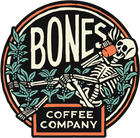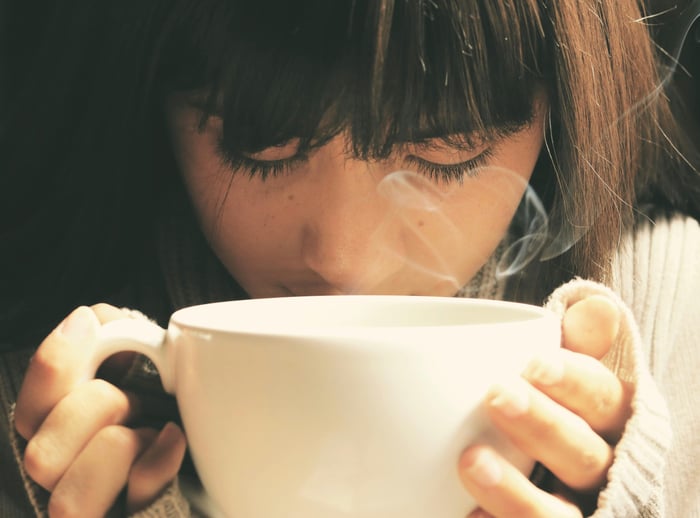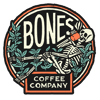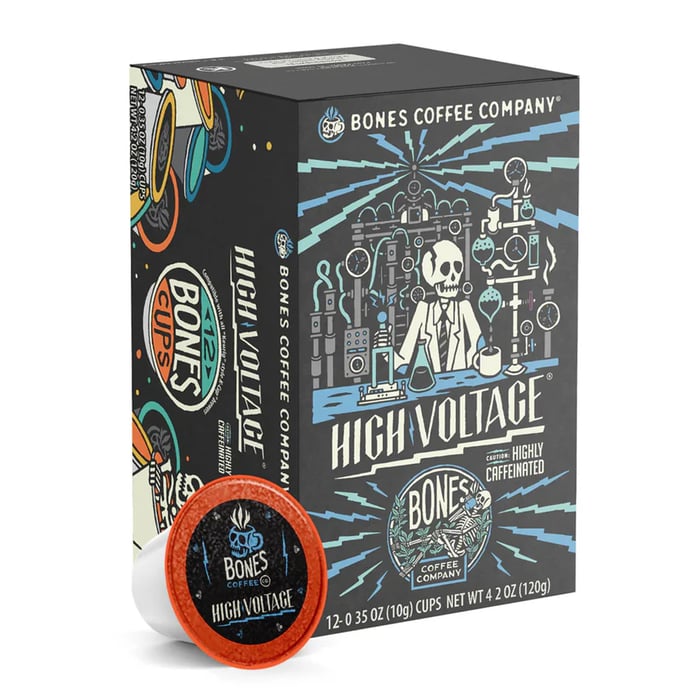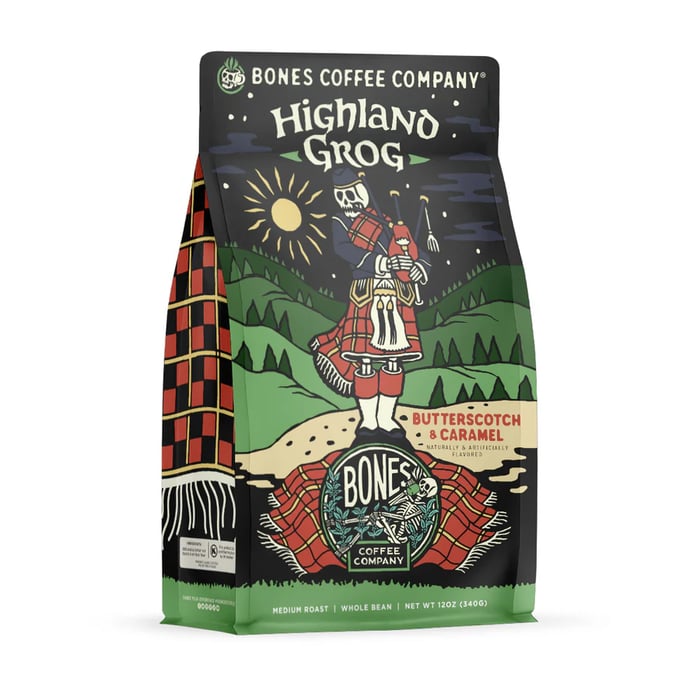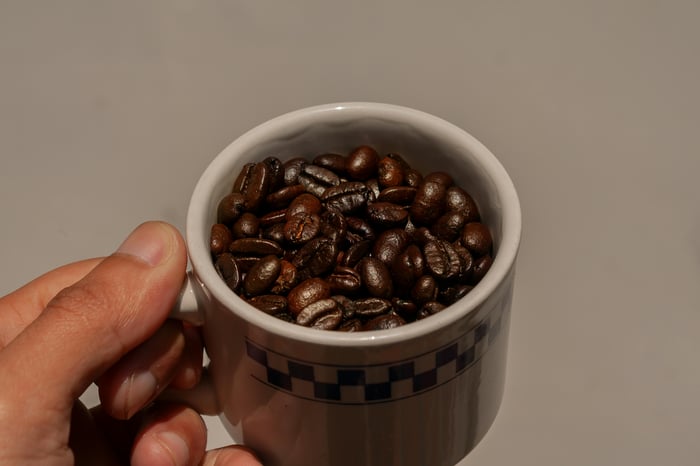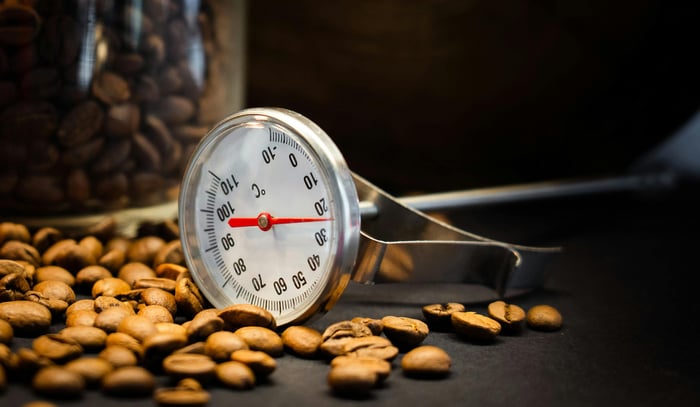Most days, coffee takes the caffeine crown, but the beans, leaves, and how you brew can change the outcomes. So, how do you pick your player in the daily energy game when deciding between tea and coffee?
Let’s break down the buzz behind these two drinks so you can choose your perfect power-up and understand the dynamics of caffeine in tea vs coffee.
How Much Caffeine Is in Your Cup? A Quick Snapshot
For those who need answers fast, here’s the rundown on how much caffeine you can expect from an average cup of coffee, a helpful reference for caffeine in tea vs coffee comparisons. Remember, espresso and cold brew are the wild cards that play by their own rules.
- Herbal Tea: 0 mg (naturally caffeine-free)
- Green Tea: 25–45 mg
- Black Tea: 30–90 mg
- Drip Coffee: 60–95 mg
- Bones Coffee single-serve pods: ~100 mg
- Cold Brew: 100–200 mg
- Espresso (1 oz shot): ~63 mg
Why Should I Care About Caffeine Intake?
Caffeine is a natural alkaloid and stimulant that works by blocking adenosine, the neurotransmitter that tells your brain it's time to sleep. By blocking it, caffeine boosts alertness and keeps you feeling wired. The boost fades over time, sometimes leaving you with an energy crash.
The FDA suggests the safe limit for most healthy adults is around 400 milligrams per day for total caffeine intake. However, this can vary based on metabolism and other health factors. If you're pregnant or have specific health concerns, it's best to consult a doctor and consider caffeine-free herbal infusions or low-caffeine decaf coffee.
Feeling jittery, anxious, having a rapid heart rate, or experiencing an upset stomach are all classic signs you’ve overdone it. Listen to your body and know your limits.
How Much Caffeine Content Is in Coffee vs. Tea?
While the quick list gives you the highlights, the caffeine in tea vs. coffee shows clear differences. An 8-ounce cup of brewed coffee contains approximately 96 milligrams of caffeine, while the same serving of black tea has about 47 milligrams.
The big difference in the caffeine levels is in the delivery, especially since tea varies depending on oxidation and contains L-theanine in types like green tea.
It's also important to remember that serving sizes can be deceptive. A tiny 1-ounce shot of espresso has less total caffeine than an 8-ounce cup of drip coffee, even though it's far more concentrated.
The following table lists the typical caffeine content found in common teas and coffees (amounts are appropriate and can vary by brand, preparation, and brewing time).
Drink (8 oz unless noted) | Typical Caffeine (mg) |
|---|---|
Herbal Tea | 0 |
Decaf Coffee | 2–5 |
White Tea | 15–30 |
Green Tea | 25–45 |
Oolong Tea | 35–55 |
Black Tea | 30–90 |
Dark Roast Coffee | 60–90 |
Light/Blonde Roast Coffee | 65–95 |
Gold Roast Coffee | ~100 |
Espresso (1 oz shot) | ~63 (per oz) |
Cold Brew (8 oz) | 100–200 |
Coffee Pods | ~100 |
Tea Profile
The leaf determines tea’s caffeine content, unlike coffee, which depends on the bean. Younger tea leaves and buds often have more caffeine than older, lower leaves. Oxidation also plays a role, so black tea generally has more punch than green tea.
Coffee Profile
With coffee, it's all about the bean (specifically coffee beans). The two main species, Arabica coffee and Robusta coffee, have wildly different caffeine levels. From there, your preparation method and how you brew it change everything.
Key Insight: Tea's secret weapon is L-theanine, an amino acid that smooths out the caffeine buzz.This promotes a feeling of calm, focused alertness, often preventing the intense peak and crash associated with coffee. |
Do the Beans and Leaves Really Matter?
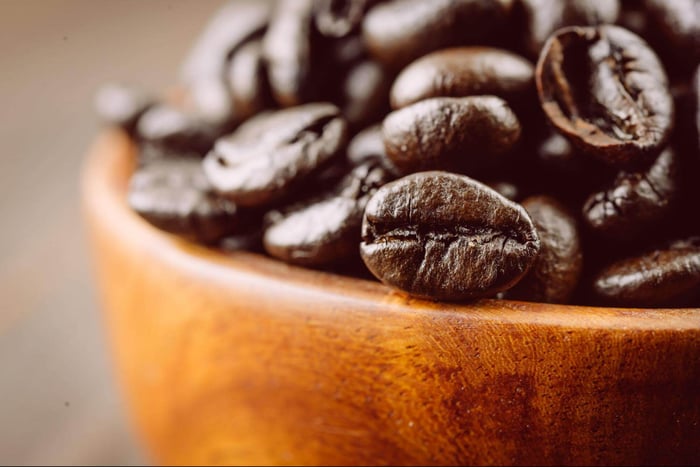
Absolutely! The starting material sets the stage for your final buzz. In the coffee world, the two main players are Arabica beans and Robusta beans. Arabica beans are prized for their nuanced, aromatic flavors, while bolder Robusta beans pack a more serious punch and higher caffeine in coffee.
For tea, it all comes from the Camellia sinensis plant, but the specific cultivar and where the leaves are plucked make a huge difference. The tender, young buds at the top are caffeine-dense, while the larger, mature leaves further down have slightly less caffeine.
Can Brewing Tricks Boost (or Cut) Caffeine?
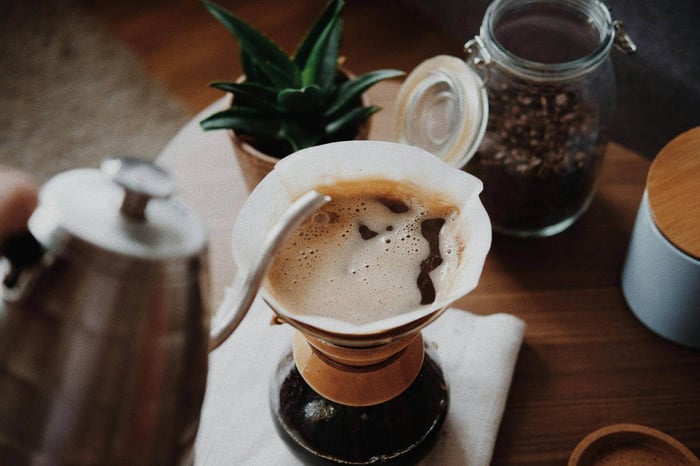
You have more control over your caffeine intake than you think. Tweaking your brewing method can dramatically alter the caffeine in your cup.
Coffee Factors
- Coffee’s Roast Level: Surprise! Lighter roasts actually retain slightly more caffeine. The coffee beans are denser, so you get more caffeine by weight than with a dark roast coffee.
- Grind Size & Brew Time: The longer water touches the coffee grounds, the more caffeine it extracts. In fact, this can lead to higher caffeine levels than other brewing methods. This is why learning how to make cold brew coffee, with its long brewing time, results in a caffeine powerhouse.
- Water Temperature: The sweet spot for caffeine extraction in coffee is between 195–205°F.
Tea Factors
- Water Temperature: Using water that's too hot can scorch delicate tea leaves. Green tea prefers a cooler 170°F, while black tea can handle boiling water at 212°F.
- Steep Time: A 1-minute steep of black tea in hot water will yield much less caffeine content than a 5-minute steep, and raise overall caffeine content.
- Leaf Size: Chopped-up leaves in tea bags infuse faster and release more caffeine content than whole leaf loose tea.
Coffee Mug or Teacup? Build-Your-Buzz Decision Tree
Not sure what to reach for? Let the difference in caffeine between tea and coffee guide your choice based on your energy needs.
- Morning fuel rocket? - Light or blonde roast coffee.
- Mid-day focus without jitters? - A high-quality green tea.
- Evening ritual? - Decaf coffee or herbal tea.
- Workout pre-game? - Cold-brewed coffee concentrates over ice.
Find Your Perfect Buzz
At Bones Coffee Company, we roast over 30 flavored coffees and single-origin varieties in small batches to guarantee you get the freshest, most flavorful experience possible. From S’morey Time to Caramel Mocha Coffee, our coffees deliver a full-powered buzz wrapped in an unforgettable flavor and bold coffee character.
After all, the takeaway is simple: drink coffee for a stronger boost, choose tea for a gentler, steadier lift. Your choice depends on whether you want a smooth climb or a rocket launch.
And no matter your style, we’ve got you covered. Choose from whole bean, ground, or our Keurig-compatible single-serve pods. With our bold skeleton-themed packaging, every bag is as gift-ready as it is brew-ready. Explore all our wild and classic coffees and find your favorite today.
